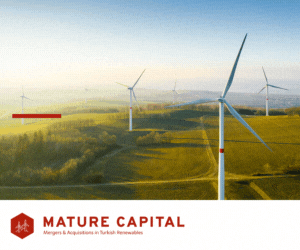Associations and Institutions
Flipping the Script on Traditional Wind Turbine Technologies

NREL Wind Researchers Undertake Sweeping Validation Study of a Downwind Turbine
In May 2024, researchers monitored what would happen when the blades on a 1.5-megawatt wind turbine at NREL’s Flatirons Campus were turned downwind. Image by Pietro Bortolotti, NREL
Most wind turbines face the wind—and there is a good reason for that. Since the 1980s, wind turbine developers have been using what is called the “Danish concept” for their designs—three blades, positioned upwind (i.e., facing the wind), that are engineered to keep facing the wind to maximize energy production.
This spring, a group of National Renewable Energy Laboratory (NREL) researchers, in partnership with the Technical University of Denmark (DTU), sought to challenge the Danish concept by answering the question: What happens when we turn wind turbine blades around?
“There has been for decades this ongoing discussion in the research community about whether turbines should all be upwind,” said NREL wind energy researcher (and project lead) Pietro Bortolotti. “The turbines we started with in the 1980s, when this standard was set, were very different than what we deploy today. They were much smaller and had chunkier blades, chunkier towers.”
The goal of a recent experiment was to provide hard data about whether the upwind paradigm is still valid.
On the Flip Side
To complete the experiment, NREL and DTU researchers literally flipped the rotor of a 1.5-megawatt research wind turbine that lives on NREL’s Flatirons Campus in Colorado—along with the wind vane and nacelle (which houses the gearbox) atop the tower. They then rewired the generator to spin the other way. “Plus, a million other things we had to do to make sure we were not going to break anything,” Bortolotti said.
After technicians spent days and nights atop aerial platforms to make the transition, attaching pressure belts and installing microphones at various distances from the wind turbine, the team was able to start capturing data.
“We conducted this experiment for two reasons: to study the techno-economic feasibility of downwind turbines and to utilize this very new instrumentation from DTU that can measure the performance of pressure distributions on a turbine blade,” Bortolotti said.
Bortolotti was supported by numerous other wind energy researchers and technicians, including Jason Roadman, Mark Iverson, Chris Ivanov, Jon Keller, and Derek Slaughter, who worked together to make the physical transition and monitor the results.

A technician on an extended aerial lift installs instrumentation on the wind turbine blade. Transitioning the wind turbine from upwind to downwind took weeks. Image by Pietro Bortolotti, NREL
A Techno-Economic Analysis To Answer Decades-Old Questions
The experiment is one of the final projects being undertaken through the Big Adaptive Rotor (BAR) project, funded by the U.S. Department of Energy’s Wind Energy Technologies Office. The goal of BAR is to support the development of land-based wind turbine technologies and identify ways to reduce costs, specifically related to making lighter-weight blades with increased flexibility.
“We looked at a whole spectrum of possible candidates,” Bortolotti said. “And we wanted to investigate whether going downwind was an opportunity to further increase flexibility and decrease costs.”
At first glance, a few aspects of the downwind scenario seem promising. First, the blades in a downwind turbine are naturally pushed away from the tower by the wind, so there is an opportunity to design lighter and more flexible blades that do not need to be stiff enough to steer clear of the tower. And the lighter the blade, the less expensive they are to make.
Second, the tilt of the wind turbine’s rotor redirects the turbine’s wake toward the ground, so it’s less likely to interfere with other turbines in a farm. And some studies show that downwind rotors increase the power performance of large wind farms.
But there is one major issue that comes along with the downwind scenario. The fact that, when a blade passes behind the tower, it is, for a split second, sheltered from the wind. This changes the pressure on the blade, producing an oscillation, or fluctuation, that causes fatigue on the blade itself and generates an audible “thump.” And that thump happens every time one of the blades passes behind the tower—in other words, often.
Over the course of 11 hours of data collection, the team did indeed capture the thump, at audible-enough levels that could impact communities within earshot.
Blades Under Pressure
The oscillation did not just generate a noticeable sound. It also generated pressure on the wind turbine—pressure that, during the experiment, was measured via three special belts that researchers from DTU affixed to one of the blades and the turbine tower.
“The belts are very new instrumentation that DTU has been working on,” said Bortolotti, who added that the belt devices can help researchers determine the performance of the rotor, whether it is upwind or downwind. “We used this experiment to help DTU push ahead this technology, because it’s a very valuable and unique device that we hope to be using again in the future for upwind rotors.”
During the experiment, the belts measured the pressure distribution along the rotor rotation, giving the team a precise look at the effect of the behind-the-tower oscillation on the blade. These measurements will help provide key insights into the increased fatigue loading experienced by downwind rotors.
One other key benefit of using the belts in the study was the data they produced. These data can provide real-world validation of aeroelastic numerical models the team developed with NREL’s OpenFAST tool.
“At NREL, we develop a lot of tools for the numerical prediction of loads, performance of wind turbines, wind farms, and so on,” said Bortolotti, who added that devices like the pressure belts are critical for validating these numerical tools.
The team plans to use the pressure belts in future experiments on more conventional rotors. “Thanks to the BAR project, we are now confident that the belts are a viable way to generate valuable experimental datasets that will help us improve our understanding of wind turbines,” Bortolotti said.

Once pressure belts were removed, NREL researchers David Barnes (above) and Ryan Beach and lead technician Mark Iverson set to work filling tiny holes in the leading edge of the blade left behind when the device’s flyboards were removed. Image by Ryan Beach, NREL
Drawing Conclusions
While the formal results of the study will not be published until later in 2024, the preliminary results are enough to conclude that the potential benefits of downwind operations do not outweigh the drawbacks.
Bortolotti points out that the team knew that while the noise and blade fatigue concerns were present with downwind land-based turbines, the impact was unclear.
“The research community had to rely on datasets from the 1980s and anecdotal evidence, which in science are not sufficient,” Bortolotti said. “We can now confidently say that the next generation of land-based wind turbines will be larger and more flexible, but the Danish concept will continue to be the dominant technology.”
Ultimately, the experiment was a major accomplishment—and not just for the fact that it collected vital data on the performance of a utility-scale downwind turbine while validating modeling and simulation tools.
“We did something that nobody thought that we could do, which was to spin a fairly big wind turbine outfitted with a large set of instrumentation that recorded a broad spectrum of aeroacoustics, loads, and pressure data,” Bortolotti said. “This 1.5-megawatt turbine is small compared to modern installations, but still, it’s a big beast, and spinning it downwind safely without breaking a single bolt was a big achievement.”


-

 Events6 years ago
Events6 years agoCanada and Turkey women working in the renewable energy sector in met
-

 Manufacturers of wind turbines6 years ago
Manufacturers of wind turbines6 years agoGE’s Haliade-X 12 MW prototype to be installed in Rotterdam
-

 Operations and Maintenance6 years ago
Operations and Maintenance6 years agoGENBA is on the rise; another milestone passed by in global existence
-

 Genel9 years ago
Genel9 years agoEWT launches the DW61, It’s most efficient and high energy producing wind turbine
-

 Genel9 years ago
Genel9 years agoInternet of things will empower the wind energy power plants
-

 Turbine Manufacturing6 years ago
Turbine Manufacturing6 years agoİğrek Makina focused on developing and producing Machine Tools and Wind Energy Turbines
-

 Energy management systems6 years ago
Energy management systems6 years agoDemand/Supply – Renewable energy with guarantees of origin (GO)
-

 Events6 years ago
Events6 years agoKey Players from 10 Nations will Show Their Strong Positions at APWEE
-

 Manufacturers of wind turbines4 years ago
Manufacturers of wind turbines4 years agoENERCON installs E-160 EP5 prototype
-

 Manufacturers of wind turbines6 years ago
Manufacturers of wind turbines6 years agoThe Nordex Group receives first order for Delta4000 turbines from the USA
-

 Genel8 years ago
Genel8 years agoZorlu energy envisages a bold new future based on renewables
-

 Manufacturers of wind turbines6 years ago
Manufacturers of wind turbines6 years agoENERCON and Lagerwey together develop two new WEC types















